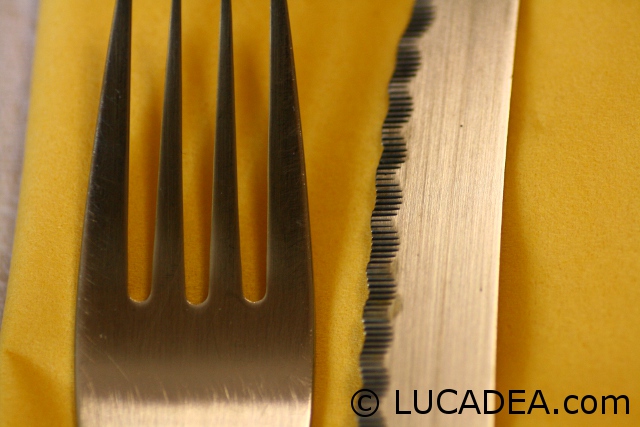In cucina
Cari ragazzi,
Sono Loris, il padre di Luca. Mio figlio mi ha chiesto di inziare una rubrica sulla cucina e sul cibo… ed io stò seriamente pensando di accontentarlo, scrivendo, quando potrò, alcune notizie, informazioni e curiosità sulla cucina… Parleremo anche di ricette di cucina italiana ed internazionale ma, più che altro, vorrei cercare di aiutarvi nel districarvi attraverso questo campo che oggi è così di moda e che offre una gamma infinita di sfaccettature e sul quale nessuno, dico nessuno, può pretendere di dire di conoscerne abbastanza. Io sono oltre 40 (dico quaranta) anni che cerco di districarmi attraverso cucine, ristoranti, cuochi, prodotti e generi alimentari di ogni tipo e vi posso garantire che ogni giorno imparo qualche cosa di nuovo.
Mi rendo perfettamente conto che i giovani, oggi, hanno pensieri e problemi più importanti da risolvere ma so anche che, quando si arriva al momento in cui sapersi districare in una cucina può risolvere un problema, ci si trova impreparati e spesso con idee teoriche che non servono a nulla all’atto pratico.
All’inizio cercherò di mettermi nei panni di un “single” per il quale saper cucinare può risolvere molti problemi, anche economici e poi parlerò di cose più importanti, come cucinare per gli amici o come saper distinguere un ristorante da un altro. C’è infatti molta differenza tra la cucina di casa e quella professionale ma ambedue non devono mai discostarsi da alcuni punti di partenza fondamentali: la qualità dei prodotti usati deve essere la migliore possibile, i prodotti devono essere conservati nel miglior modo possibile ed infine tener sempre presente che una cucina pulita ed organizzata è la caratteristica base di vuole e sà cucinare bene.
Normalmente, quando parlo di cucina in pubblico, dico sempre che ogni maschio italiano è:
– allenatore della nazionale di calcio
– il migliore autista
– uno Chef di cucina
– e poi un’ultima cosa che non posso scrivere ma che tutti capirete senz’altro…
Per poter cucinare è necessario amore, voglia, fantasia ma, prima di tutto, conoscere le regole base ed essere puliti, altrimenti il tempo che si risparmia per cucinare un piatto si perde per pulire la cucina…
Immagineremo pertanto ciò che si troverà di fronte un Single tipo, che chiameremo Marietto e che tutti i giorni si troverà di fronte un problema da risolvere, cucinandosi almeno un piatto caldo, rapido ma che lo soddisfi e che non costi troppo.
Arrivederci presto!


